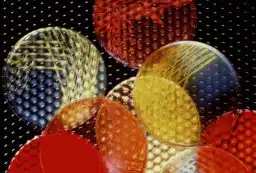Scientists have discovered the ability of a protein which helps the brain heal itself.
This has established a promising direction for research, ultimately leading to possible clinical treatments for brain-related injuries including strokes, car accidents and spinal damage.
Mr Roger Chung, a neuroscientist working at the University of Tasmania said that scientists don’t understand very well how the brain responds to and recovers from injury.
“Our breakthrough discovery is that we have identified one possible healing mechanism that is used by the brain following injury,” he said.
Research performed over the past two years by Mr Chung, a PhD student in the NeuroRepair Group at the University of Tasmania, has identified the ability of a family of naturally-occurring proteins, named metallothioneins, to influence brain healing following injury.
He has demonstrated that a member of this family is able to dramatically promote recovery of the brain following physical injury.
He said that there are two possible ways that his discovery might be used. The first would be by boosting the amount of metallothionein produced by the brain following a traumatic event.
“To do that we’d need to discover the on-off switch that allows the body to produce the protein naturally, which is something that we are investigating right now” he said.
“The second possibility would be to make metallothionein artificially, which is a straightforward process, and inject it directly into patients.”
Mr Chung said that animal and laboratory trials had been very promising so far, but that even if everything went smoothly a commercial product was still some time off.
“Our ultimate aim is to help people with brain injury, and while we have a lot more work to do we are confident that we are heading in the right direction with our research.”
Mr Chung is one of sixteen young scientists presenting their discoveries to the media, public and students for the first time, at Fresh Science.
Roger Chung
Junior Research Fellow School of Medicine, University of Tasmania
Cure for brain injury: Close at hand
The role of metallothioneins in recovery from brain injury.
Brain Injury? Broken spine? A terrifying thought because of the consequences to the sufferer and their family. Unfortunately our ability to cure or even treat these injuries is extremely limited. However, imagine a treatment that is easy to administer, is based upon a naturally occurring protein, and promotes dramatic healing of the injured brain. I may have discovered just such a treatment.
Project description
Most of us know someone who has injured their brain or spinal cord as a result of an accident, such as a car crash. The terrifying consequence of such an injury could be minor or severe mental retardation, or even losing the ability to walk. Similar consequences are seen in people suffering from diseases such as Alzheimer’s or Parkinson’s disease. But WHY does this occur? And WHAT can we do about it? Scientists know that physical trauma or disease of the brain causes injury and/or death of brain cells. However, much less is known about how the brain responds and/or recovers from such injury. Indeed, this is a major reason why there are no effective treatments available for people who suffer from brain injury or disease.
Over the past 2 years, research performed by Mr Roger Chung (PhD candidate), under the guidance of Dr Adrian West and Professor James Vickers (within the School of Medicine at the University of Tasmania), has found that a family of naturally-occurring proteins, named metallothioneins, are able to influence brain healing following injury. He has demonstrated that a member of this family is able to dramatically promote recovery of the brain following physical injury. These results are very exciting, since they identify one possible healing mechanism that is used by the brain following injury.
Of further significance, these findings indicate a potential therapeutic treatment based upon metallothioneins. For instance, since these proteins are normally found in the brain and are involved in the brain’s response to injury, it is possible that increasing the amount of metallothionein produced by the brain following trauma might be a means of promoting recovery of the brain. Such a treatment would be highly beneficial, since it would involve the patient’s own body aiding in its recovery, as opposed to the use of artificial drugs and chemicals. Alternatively, based on the knowledge that metallothioneins are able to reach the brain when injected intraperitoneally, these proteins can potentially be administered directly to patients.
This research was supported by funding from the National Health & Medical Research Council (Australia), the Motor Accident and Insurance Board of Tasmania, the International Institute for Research in Paraplegia (Switzerland) and the Tasmanian Masonic Society.
Personal details
Qualifications: 1999 – BSc (1st Class Honours), University of Tasmania; 2003 – PhD thesis in review (submitted Feb, 2003), University of Tasmania Home: 2/8 Amanda Cres, Sandy Bay. Tasmania, 7005 Home: 2/8 Amanda Cres, Sandy Bay. Tasmania, 7005





 Fresh Science is on hold for 2022. We will be back in 2023.
Fresh Science is on hold for 2022. We will be back in 2023.